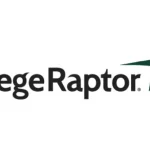As kids, we are taught 1 + 1 = 2. As we get older, it’s always nice to think of ways to make 1 + 1 = 3. When you make that happen you know you are leveraging your efforts for more significant impact, and getting greater value along the way.
When the four ingredients of a student engagement plan are put together properly, schools can indeed create a 1 + 1 = 3 dynamic. We refer to this as the Student Engagement Flywheel.
Each component links to another in a continuous cycle where the only outcome is success. Success for the school (hitting enrollment and retention targets) and success for the student (graduation, employment, advanced educational opportunities).
Technology Accelerates the Flywheel
The coordination and collaboration of various technologies through a single platform, and a single source of truth drive the success of the Flywheel. Consider these four (4) core platform components:
- [Outreach] Two-way text messaging capabilities. These are a scalable outreach approach. When supported by AI, they can “scale the personal touch” without crushing staff bandwidth.
- [Support] Artificially intelligent (AI) chatbots, as well as live chat, create a 24/7 support function for students needing virtual assistance.
- [Educate] Video explainers, and other inputs support these interactions to better answer questions.
- [Analyze] Predictive analytics. Technology facilitating these engagements yields insightful data allowing schools to analyze behavior and place students into subsequent outreach flows to further nudge students forward in their educational journey.
The combination of content and technology, coupled with a thoughtful strategy of how and when to deploy them, are at the heart of a sound engagement strategy. These tools enable a college or university to support students in a variety of ways: through education, outreach reminders, and timely nudges to name a few. Analytics then provide the necessary insights to measure which student engagement tactics are the most impactful, the best times to run activities, and which ones are most appreciated by students and prospects. They are the foundational components of the Flywheel, as the image below illustrates.

The Student Engagement Flywheel
The Gains From Technology
Let’s go back to our 1 + 1 = 3 concept. Where does the extra “1” come from? It’s the technology that scales the work of the staff. Without it, we are left with the old 1 + 1 = 2 model, which was sufficient when higher education was in a “steady-eddy” growth pattern. That’s not the case today. Colleges face an existential crisis from enrollment and financial pressures. Technology is the critical piece that will enable colleges to succeed in the new normal.
We should not view technology in and of itself as a source of “magic beans.” Rather it’s the technology – paired with a thoughtful strategy – that can be a vehicle through which the institution can scale the efforts of the staff. Scale is needed for the institution – no matter whether it’s small or large – to drive financial viability and vitality in the coming years. As vitality grows, there are more resources available to invest in students, staff, faculty, and programs. This, in turn, drives student interest and student success.
The Wrap: Why Student Engagement is Critical
The key to increasing enrollment and retention is doubling down on student engagement – which requires a commitment to a strategy (and the appropriate technology) to help support it. While there is certainly more than one approach it boils down to covering your bases on student outreach, support, education (non-academic), and analytics.
The Student Engagement Flywheel can help your institution strategically implement a 360-degree approach – empowering your institution to both serve and support students (and lead them to success) proactively and reactively to ensure no one falls through the cracks. Remember, the appropriate tools and technology, coupled with a thoughtful strategy, measurement plan, and staff support, can help accelerate the path to higher levels of student engagement.















